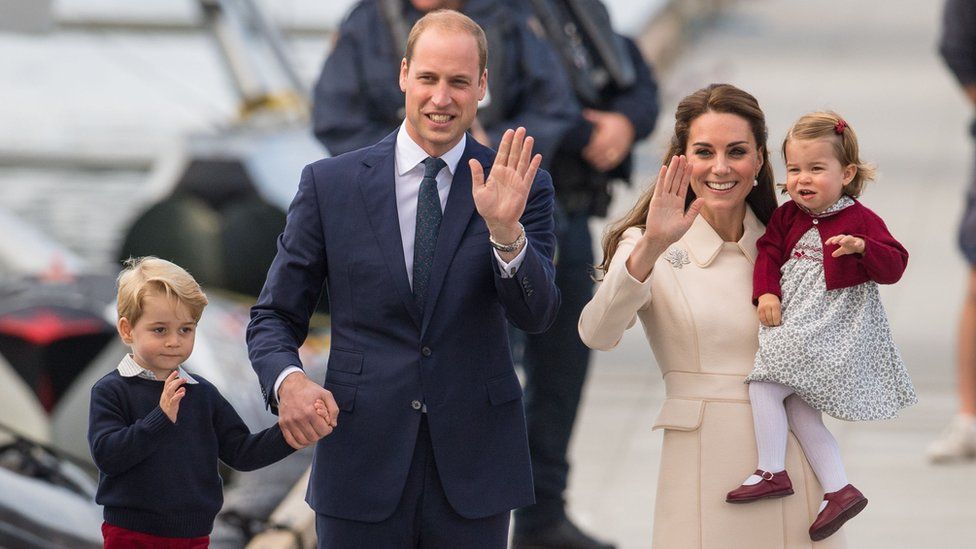Royal baby: Duchess of Cambridge in labour
- Published

The Duchess of Cambridge has gone into labour with her third child.
Catherine and the Duke of Cambridge arrived at the Lindo Wing at St Mary's Hospital, Paddington, in central London shortly before 6:00 BST on Monday.
Catherine has been on maternity leave since making a last royal visit to a charity lunch in London on 22 March.
The baby, whose title will be HRH Prince or Princess of Cambridge, will be fifth in line to the throne and the Queen's sixth great-grandchild.
The birth will be announced with an email to the press and a celebratory tweet posted on the Kensington Palace Twitter feed.
There will also be the traditional custom of placing a framed paper proclamation on an ornate gold stand behind the iron railings of Buckingham Palace.
As with her first two children, Kate is hoping for a natural birth and does not know whether she is having a boy or a girl.
Consultant obstetrician Guy Thorpe-Beeston and consultant gynaecologist Alan Farthing are the two senior royal doctors overseeing the birth.
Both were called in for the arrival of Prince George in 2013 and Princess Charlotte in 2015.
Favourite names at the bookmakers include Mary, Alice, Alexandra, Elizabeth and Victoria for a girl and Arthur, Albert, Frederick, James and Philip for a boy.
The duchess's pregnancy was announced in October.
If, as expected, the child is born on Monday, St George's Day, they will share their birthday with Lady Gabriella Windsor - the daughter of Prince and Princess Michael of Kent, who was born at the Lindo Wing on 23 April 1981.
The baby has just missed arriving on the Queen's birthday, which was on Saturday.
At the scene
Kate Whannel, BBC News
Already the streets outside St Mary's Hospital are awash with royal fans, curious tourists and journalists from around the world.
Sharon McEwan from Kilburn, north-west London, has been coming to the hospital every day for more than a fortnight.
"I love the royals - I read about them growing up in Jamaica," she says. "My wish was that I could one day come to England to see the Queen."
John Loughrey, 63 from Streatham, has been camping outside the hospital for 15 days.
"This is my temporary home," he says. "The hospital have been so good to us. They brought us porridge for breakfast, let us use the showers and on the Queen's birthday we got champagne."
Eleonor Ollieric, 20 and Constance Denis, 21, are au pairs from France.
"We dropped the kids off at school and came straight here," says Ms Denis.
"We love the Royal Family in France. If it's a girl we think it'll be called Victoria and Albert if it's a boy."
As with her previous two pregnancies, Catherine, 36, has suffered from hyperemesis gravidarum, or severe morning sickness.
The condition affects about one in every 200 pregnancies and results in severe nausea and vomiting - with one of the main dangers being dehydration.
The last third-born monarch
To become King or Queen as the third-born royal child is rare - and has yet to happen within the current House of Windsor.
But the third child of George III and Queen Charlotte, William IV, took on the task and ruled from 1830 to 1837.
The Hanoverian king acceded to the throne aged 64 when his older brother, George IV, died without an heir.
He became next in line when he was 62 and his other older brother, Frederick, Duke of York, died.
- Published23 April 2018
- Published4 May 2015
- Published23 July 2013